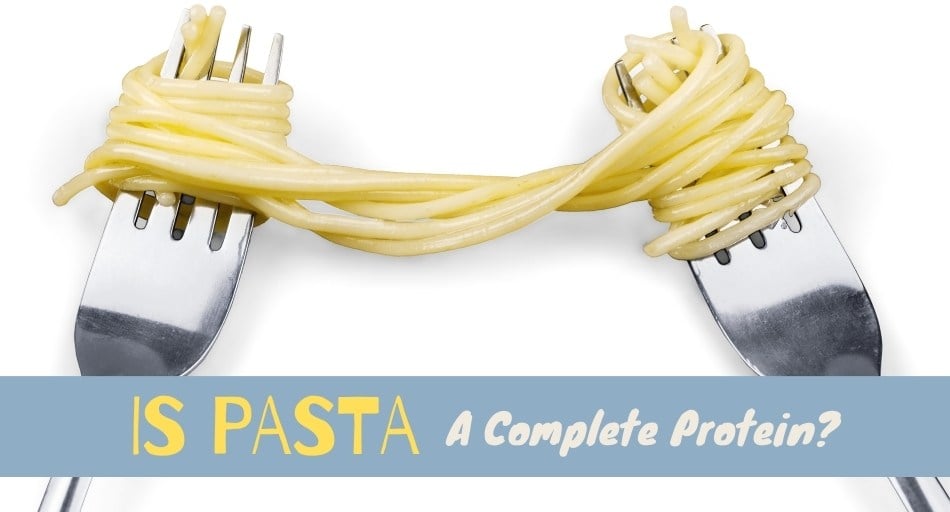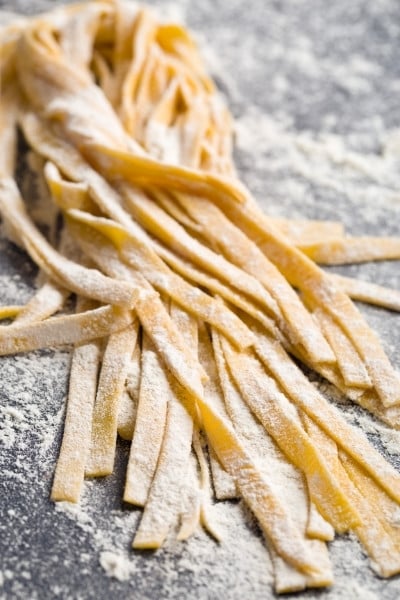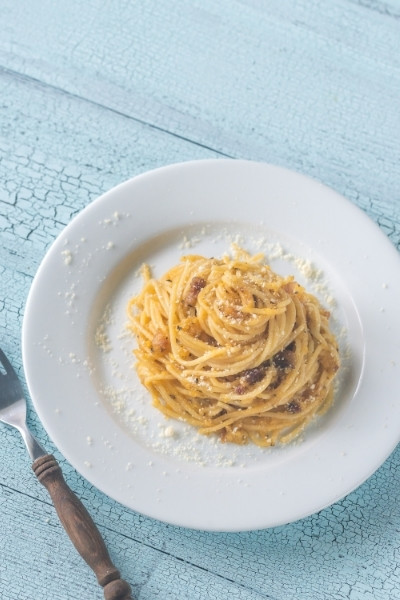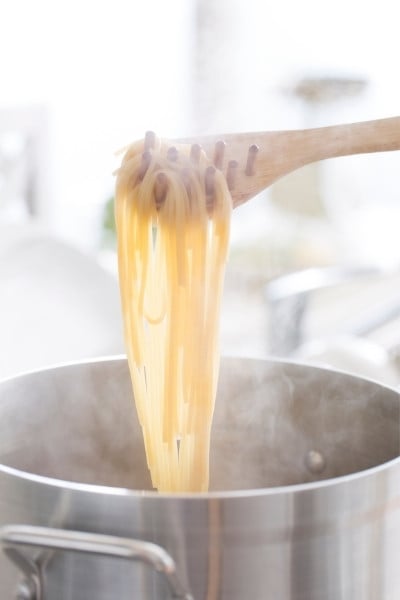Protein is one of three macronutrients that you have to consume each day to stay healthy. It fuels your muscles and ensures good energy levels.

It can even help you with weight loss by filling you up after eating.
There are many great food sources of protein, but the best ones are called complete proteins.
Most of them are animal products, but there are some plant-based alternatives. But do you know which ones are complete proteins?
How about pasta? Is it a great source of all nine essential amino acids?
Table of Contents
Is Pasta A Complete Protein?
Pasta isn't a complete protein. Because of that, you have to consume it with other sources of the missing amino acids to create a complete protein food pairing. Fortunately, there are many foods that, when consumed with pasta, help you create a complete protein.
What’s more, if you choose whole-grain and whole-wheat pasta, you can get a lot of minerals that help you stay healthy. So, make sure to opt for these varieties instead of plain, white pasta.
Why isn't pasta a complete protein?
Pasta doesn't contain all nine essential amino acids that your body cannot produce on its own.
Because of that, it's not considered a complete protein. So, if you eat pasta on its own, you're not getting the most out of the already limited amount of protein it contains.

Even if you purchase whole-grain or enriched pasta kinds, you still won’t be able to get all the amino acids your body needs.
So, always serve your pasta with a source of the missing amino acid.
Also, remember that this applies to regular pasta and not pasta made with vegetables such as spinach or kale.
These are much lower in protein, so they contain very few antioxidants.
How can you make pasta a complete protein?
Even though pasta isn't a complete protein on its own, there are ways you can create a complete protein just by adding some other ingredients to it.
For example, peas and beans contain the amino acid that pasta misses. So, adding these to pasta creates a complete protein. You can also add most veggies as well as walnuts, cashews, and sunflower seeds.
When combining these foods with pasta, make sure to eat these within a 24-hour period.
That's how you can use pasta to create a complete protein, even if you don't eat them together during the same meal.
Also, remember that protein-enriched kinds of pasta don't contain the same amounts of amino acids as whole-grain pasta.
So, you might need to adjust the ratio between pasta and the veggies to get enough of each amino acid.
Are all types of pasta not complete proteins?
All regular types of pasta aren't complete proteins. So, if you're looking to consume them for the amino acids they contain, you have to add other foods to create a complete protein with them.

Even other types of pasta and noodles, like egg noodles, aren't a complete protein. This kind contains only eight of the nine essential amino acids. So, it's still not enough to create a complete protein.
Egg noodles lack lysine, so you have to eat them with something that contains enough of this amino acid.
Good choices are watermelon, carrots, cauliflower, crimini mushrooms, or even nutritional yeast.
Is pasta good for you?
Whether pasta is good for you depends strongly on the kind you choose. The best kind of pasta is whole-grain pasta as it contains a lot of minerals and vitamins.
Plain, white pasta is stripped of these nutrients, so you’re simply taking in empty calories.
If you choose whole-grain pasta, you can get a lot of manganese from a single serving, almost all your daily need for this mineral.
Manganese helps your body form connective tissues, bones, blood clotting factors, and sex hormones.
This mineral is also important for nutrient metabolism and calcium absorption. So, make sure to get enough each day.
Another mineral abundant in whole-grain pasta is selenium. This mineral acts as a powerful antioxidant.
It helps flush out free radicals and prevent oxidative damage to your cells. Because of that, eating whole-grain pasta can lower your risk of heart disease and diabetes.
You can also get decent amounts of thiamin, phosphorus, magnesium, and copper from eating whole-grain pasta. But these amounts aren’t too high.
Whole-grain pasta provides you with a lot of fiber per single serving. For example, one cup of cooked whole-grain pasta contains 25% of your daily recommended need for this nutrient.
So, even though it comes with quite a lot of calories, you can get a decent amount of fiber.

Fiber is important for gut health as well as digestion. This nutrient also helps you feel full after eating, which can be beneficial for weight loss.
In addition, getting enough fiber can be food for those with acid reflux symptoms like heartburn.
What’s more, some studies show that eating whole-grain pasta as opposed to refined grains can help lower your appetite and increase fullness after eating.
It’s important to eat pasta with healthy veggies and protein, though. This is because whether you eat whole-grain or refined pasta, you’re still getting a lot of calories from pasta.
So, make sure to eat a balanced meal to avoid gaining weight.
Other studies show that eating too much pasta and other high-carb products can increase your risk of metabolic syndrome.
This group of conditions raises your risk of heart disease and other cardiovascular issues.
So, while it’s perfectly OK to eat some pasta from time to time, try not to base your whole diet around it.

Conclusion
On its own, pasta isn’t a complete protein. But luckily, there are ways you can create a complete protein using pasta and many other ingredients.
That way, you can get enough of each of the nine amino acids that your body doesn’t produce.
What’s more, if you opt for healthy pasta kinds like whole-grain and whole-wheat, you can load up on many nutrients like fiber, thiamin, phosphorus, and manganese.
So, eating pasta with healthy veggies can be good for you, provided that it’s in moderation.
Sources: Nutrition Data and National Library of Medicine
